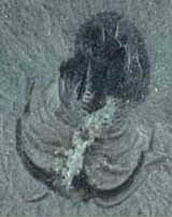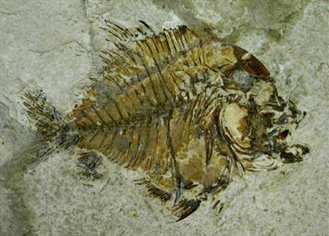Lagerstätten
A lagerstätte is a name originally applied by German palaeontologists to exceptionally preserved fossil assemblages.

Burgess Shale arthropod
They are unusual and often characterised by stunning fossils with preserved soft parts or by a great volume and diversity of fauna/flora. These ‘fossil bonanzas’ are rare in the fossil record as they usually require exceptional environmental conditions, or catastrophic events, to preserve the original diverse community in such detail. They are extremely important, not only for the exquisite fossils that they contain, but also for the wealth of information that they provide palaeontologists in comparison with normal fossil localities.
Lagerstätten can provide evidence of soft body morphology that is very rarely preserved within the fossil record, and give an insight into how organisms become fossilised. They record in great detail the biodiversity and palaeoecology of a specific palaeoenvironment at a certain point within Earth’s long history.
Horseshoe crab from the Solnhofen Limestone
The Lapworth Museum has examples of fossils from many of the most famous lagerstätten, including specimens from the 510 million year old Burgess Shale of British Columbia, presented by the discoverer, Charles Walcott, to Charles Lapworth. From the Carboniferous come plants and animals preserved in ironstone concretions of the Mazon Creek lagerstätte of Illinois.

Monte fish
In 1926, Granville Bantock, Professor of Music at the University, and also a collector of fine fossils, presented the Lapworth Museum with a collection that included, fish, shrimps, lobsters, horseshoe crabs, starfish and delicate insects, from the famous Solnhofen Limestone of Germany, a rich fossil assemblage of Jurassic age most famous for the remains of the first ‘bird’, Archaeopteryx.
The museum also has excellent examples from some of the less well-known lagerstätten, such as the beautifully preserved fish from the 50 million year old Eocene sediments of Monte Bolca, near Verona in Northern Italy.